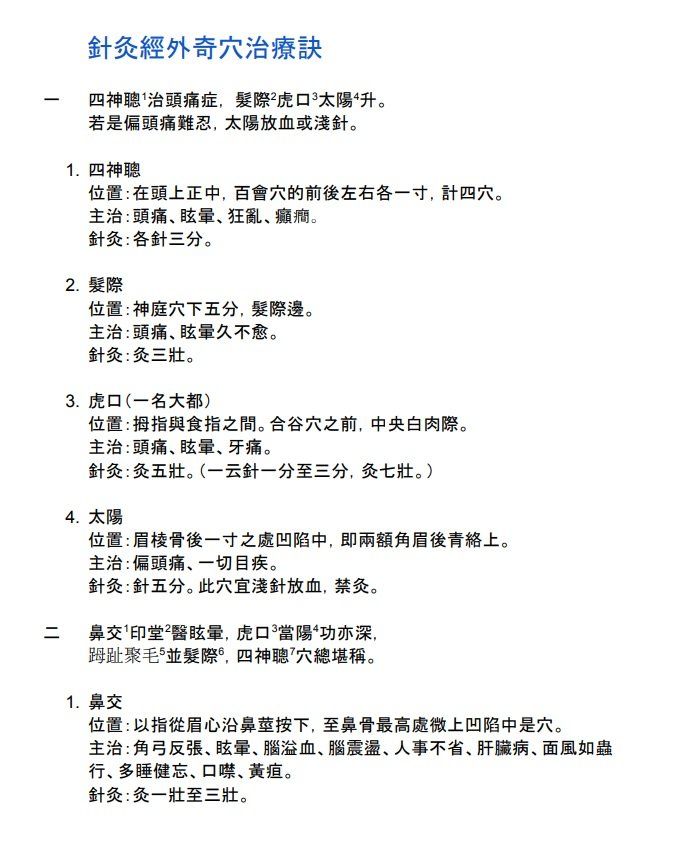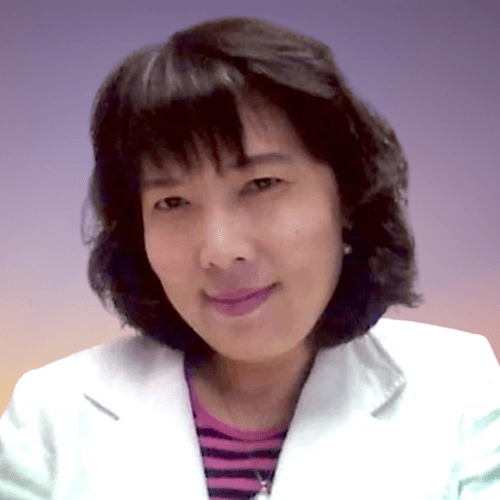About Chinese Acupuncture
Classic Chinese Acupuncture is a general term for needling and moxibustion.
Acupuncture refers to inserting needles (usually filigree needles) into the patient's body at a certain angle under the guidance of Traditional Chinese Medicine (TCM) theory, and using needling techniques such as twisting and lifting to stimulate specific parts of the human body to achieve the purpose of treating diseases. . The piercing points are called human body acupoints, or acupoints for short. According to the latest statistics of acupuncture and moxibustion textbooks, there are a total of 361 acupuncture points in the human body.
Moxibustion is a prefabricated moxibustion stick or moxibustion grass that is burned and ironed on certain acupoints on the body surface, and the heat stimulation is used to prevent and treat diseases. Usually, wormwood is the most commonly used, so it is called moxibustion. Nowadays, moxa sticks are often used in people's lives.
Dr. Melinda Lei’s Modern Acupuncture integrates Neuroanatomy for Enhanced Precision and Effectiveness
Acupuncture has been a key element of traditional Chinese medicine (TCM) for thousands of years, practiced with the goal of balancing the body's vital energy, or "Qi," to promote healing and wellness. With advancements in medical science, practitioners like Dr. Melinda Lei have pioneered a more sophisticated approach, integrating modern neuroanatomy into the ancient practice of acupuncture. This fusion has led to a more precise selection of acupoints, enhancing the effectiveness of treatments for various conditions.
The Evolution of Acupuncture through Neuroanatomy
Acupuncture traditionally revolves around a network of meridians—channels through which Qi is believed to flow. Along these meridians lie acupoints, which when stimulated, are thought to influence the body's energy balance, thereby affecting physical and mental health. However, as medical science evolved, especially with advancements in neuroscience, researchers began exploring the anatomical and physiological underpinnings of acupuncture's efficacy. This exploration laid the groundwork for the development of what is now known as modern acupuncture science.
Dr. Melinda Lei, a prominent figure in this field, has been instrumental in bridging the gap between ancient acupuncture practices and contemporary neuroanatomical science. Her work emphasizes the idea that acupoints are not just arbitrary points on the body but are intricately linked to the nervous system. By mapping acupoints to neural structures such as nerves, blood vessels, and muscle trigger points, Dr. Lei has provided a more scientific rationale for acupuncture, leading to more targeted and effective treatments.
Neuroanatomy’s Role in Acupoint Precision
The incorporation of neuroanatomy into acupuncture allows practitioners to select acupoints with greater precision. In traditional acupuncture, point selection is guided by an in-depth understanding of meridians and the body’s energy pathways. However, this system can sometimes be ambiguous, especially when viewed through the lens of modern medicine. Neuroanatomy offers a more concrete framework, linking acupoints to specific nerve clusters, muscle groups, and vascular structures.
Dr. Lei’s approach involves a detailed understanding of the body's neurological layout. For instance, acupoints that correspond to areas rich in nerve endings, such as the hands, feet, and face, can be used to stimulate both the central and peripheral nervous systems. By precisely targeting these points, acupuncture can modulate neural activity, influence neurotransmitter release, and promote natural healing processes.
A practical example of this precision can be seen in the treatment of chronic pain. Through neuroanatomical mapping, practitioners can identify acupoints that lie near key nerves involved in pain perception, such as the sciatic nerve in cases of sciatica. Stimulating these points can help modulate the nerve’s activity, reducing pain and promoting tissue healing. This neuroanatomically informed approach enhances the specificity and success of acupuncture treatments.
Enhanced Treatment Outcomes and Scope of Application
The integration of neuroanatomy into acupuncture has broadened its applications and improved treatment outcomes for various health conditions. By understanding the neurological basis of acupoints, Dr. Lei and other practitioners can tailor treatments to the patient's unique physiological makeup, achieving more consistent results. Conditions such as chronic pain, migraines, anxiety, depression, and even neurological disorders like Parkinson's disease have shown improved response rates when treated with this modern approach to acupuncture.
1. Chronic Pain Management: Traditional acupuncture has long been used to manage chronic pain. However, the neuroanatomical approach taken by Dr. Lei provides a more targeted intervention. By stimulating nerves associated with pain pathways, acupuncture can induce the release of endorphins and modulate the activity of neurotransmitters like serotonin and dopamine. This precise targeting not only alleviates pain but also helps reduce inflammation and promote tissue repair.
2. Neurological and Psychiatric Disorders: The neuroanatomical model has opened new possibilities for treating conditions like anxiety, depression, and neurological disorders. For instance, acupoints associated with the vagus nerve, which plays a crucial role in regulating the parasympathetic nervous system, can be used to manage stress and anxiety. By stimulating these points, practitioners can promote relaxation and modulate brain activity, contributing to improved mental health outcomes.
3. Rehabilitation and Recovery: Dr. Lei’s methodology has also found application in rehabilitation, especially for patients recovering from stroke or neurological injuries. By selecting acupoints that correspond to specific neural pathways involved in motor function, acupuncture can support neuroplasticity—the brain's ability to reorganize and form new neural connections. This targeted stimulation aids in restoring motor function and promoting recovery.
The Science Behind the Practice: Mechanisms of Action
The integration of neuroanatomy into acupuncture is not just a matter of more precise point selection; it is also supported by a deeper understanding of the mechanisms involved. Research has shown that acupuncture stimulates the nervous system, leading to the release of various neurochemicals that promote healing and pain relief. For example:
Endorphin Release: Stimulating specific acupoints can trigger the release of endorphins, the body's natural painkillers. By selecting points near neural pathways that mediate pain, acupuncture can effectively alleviate both acute and chronic pain conditions.
Neurotransmitter Modulation: Acupuncture has been found to influence the release of neurotransmitters like serotonin, dopamine, and norepinephrine. These chemicals play a key role in mood regulation, explaining why acupuncture can be beneficial for conditions like depression and anxiety. The neuroanatomically informed selection of acupoints can enhance this regulatory effect.
Neuromodulation: Acupuncture can modulate the activity of the autonomic nervous system, which controls involuntary bodily functions like heart rate and digestion. By stimulating points that influence the vagus nerve and other key autonomic pathways, acupuncture can promote relaxation, reduce stress, and support homeostasis.
Looking ahead, the fusion of acupuncture with neuroanatomy holds promise for personalized medicine. As our understanding of the nervous system grows, future practitioners will be able to tailor acupuncture treatments even more precisely to individual patients' neurobiological profiles. This personalized approach could revolutionize how we address chronic pain, mental health disorders, and neurological conditions, offering a holistic yet scientifically grounded path to healing.
Acupuncture Science Study
Dr. Lei's "Master and Apprentice" program is designed to preserve the essence of traditional Chinese medicine (TCM) learning while integrating modern acupuncture science. This program emphasizes a hands-on, mentorship-driven approach to acupuncture education, wherein students (apprentices) learn directly under Dr. Lei's guidance.
Key Features of Dr. Lei's "Master and Apprentice" Program
1. Personalized Mentorship: In line with traditional practices, Dr. Lei offers one-on-one mentorship to her apprentices, allowing them to develop a deep understanding of acupuncture techniques, patient care, and diagnostic skills. This close interaction enables students to grasp the subtleties of acupuncture that might be overlooked in conventional classroom settings.
2. Neuroanatomical Integration: Dr. Lei’s program is unique in its blend of traditional knowledge with modern neuroanatomy. Apprentices learn to select acupoints based on both classical meridian theory and contemporary understanding of the nervous system, enhancing their treatment effectiveness and expanding their scope of practice.
3. Clinical Practice: Apprentices actively participate in clinical practice, treating real patients under Dr. Lei’s supervision. This immersive experience allows them to refine their diagnostic and treatment skills while receiving immediate feedback and guidance from an experienced master.
4. Holistic Approach: The program also delves into the holistic principles of Chinese medicine, including herbal remedies, dietary therapy, and lifestyle guidance. Apprentices gain a comprehensive understanding of how to address patients' health issues from a multifaceted perspective.
5. Preparation for Modern Practice: While rooted in tradition, the program also prepares apprentices for the requirements of modern acupuncture practice, including knowledge of state licensure requirements, safety protocols, and integration with Western medical practices.
Dr. Lei’s "Master and Apprentice" program exemplifies how traditional acupuncture learning can coexist with modern scientific approaches. By incorporating neuroanatomy into the traditional framework, Dr. Lei ensures that her apprentices are well-versed in both classical and contemporary methodologies. This prepares them to meet professional standards while preserving the rich heritage of acupuncture practice.
====================================================================================
How to find NIH funding opportunities:
https://www.nih.gov/grants-funding
Learn About Clinical Studies:
https://clinicaltrials.gov/ct2/about-studies/learn
---------------------------------------------------------------------------------------------------------------------------------
Ke Chuan Hao's (柯传灏) Two Classic Chinese Acupuncture Books





Dr. Melinda Lei (Min Lei)
Doctor of Acupuncture and Oriental Medicine
Master's degree of Computer Science
California State Licensed Acupuncturist
Dr. Melinda Lei is a 3rd generation TCM (Traditional Chinese Medicine) specialist. She obtained her initial experience with TCM from her grandfather Ke Chuan Hao (柯传灏) in China, who was renowned TCM doctors.
Contact info:
Clinic: info@yanhuangtcm.com; text : 650-793-9019
Academic: info@acupuncturescience.net
